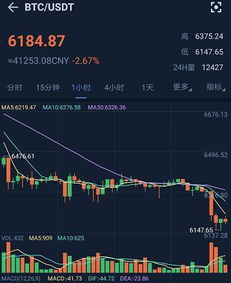Bitcoin futures quantitative trading involves using mathematical models and algorithms to execute trades on Bitcoin futures contracts. This method utilizes historical data, statistical analysis, and automated trading strategies to generate profits. Here’s a comprehensive overview of Bitcoin futures quantitative trading:
1. Understanding Bitcoin Futures
Bitcoin futures are financial derivatives contracts that allow traders to speculate on the future price of Bitcoin without actually owning it. These contracts obligate the buyer to purchase or the seller to sell Bitcoin at a predetermined price on a specified future date.
2. Quantitative Trading Strategies
Quantitative trading strategies for Bitcoin futures typically fall into several categories:

3. Data Analysis and Modeling
Quantitative traders rely heavily on data analysis and modeling to develop profitable strategies:
- Historical Data: Traders collect and analyze historical price, volume, and order book data to identify patterns and trends.
- Statistical Analysis: Statistical techniques such as regression analysis, time series analysis, and Monte Carlo simulations are used to model Bitcoin price movements and assess the performance of trading strategies.
- Machine Learning: Machine learning algorithms, including neural networks and decision trees, are employed to uncover complex relationships in the data and develop predictive models.
4. Risk Management
Risk management is crucial in Bitcoin futures quantitative trading to mitigate potential losses:
- Position Sizing: Traders determine the appropriate size of each position based on factors such as account size, risk tolerance, and volatility.
- Stop Loss Orders: Stop loss orders are used to automatically exit a position if the price moves against the trader beyond a certain threshold, limiting potential losses.
- Diversification: Traders spread their risk across multiple trading strategies, assets, and markets to reduce the impact of adverse market movements.
- Monitoring and Adjustment: Traders continuously monitor their positions and adjust their strategies in response to changing market conditions.
5. Regulatory Considerations
Bitcoin futures trading is subject to regulatory oversight, and traders must comply with applicable laws and regulations:
- Regulatory Compliance: Traders must adhere to regulatory requirements concerning trading practices, reporting, and investor protection.
- Exchange Selection: Traders choose reputable and regulated exchanges for executing their Bitcoin futures trades to ensure transparency and security.
- Tax Implications: Traders are responsible for reporting and paying taxes on their trading profits in accordance with local tax laws.
6. Conclusion
Bitcoin futures quantitative trading offers opportunities for profit in the volatile cryptocurrency market by leveraging advanced mathematical models and algorithms. However, success in quantitative trading requires a deep understanding of market dynamics, robust risk management practices, and compliance with regulatory requirements.
It’s essential for traders to continuously refine their strategies, adapt to changing market conditions, and stay informed about the latest developments in Bitcoin futures trading.











